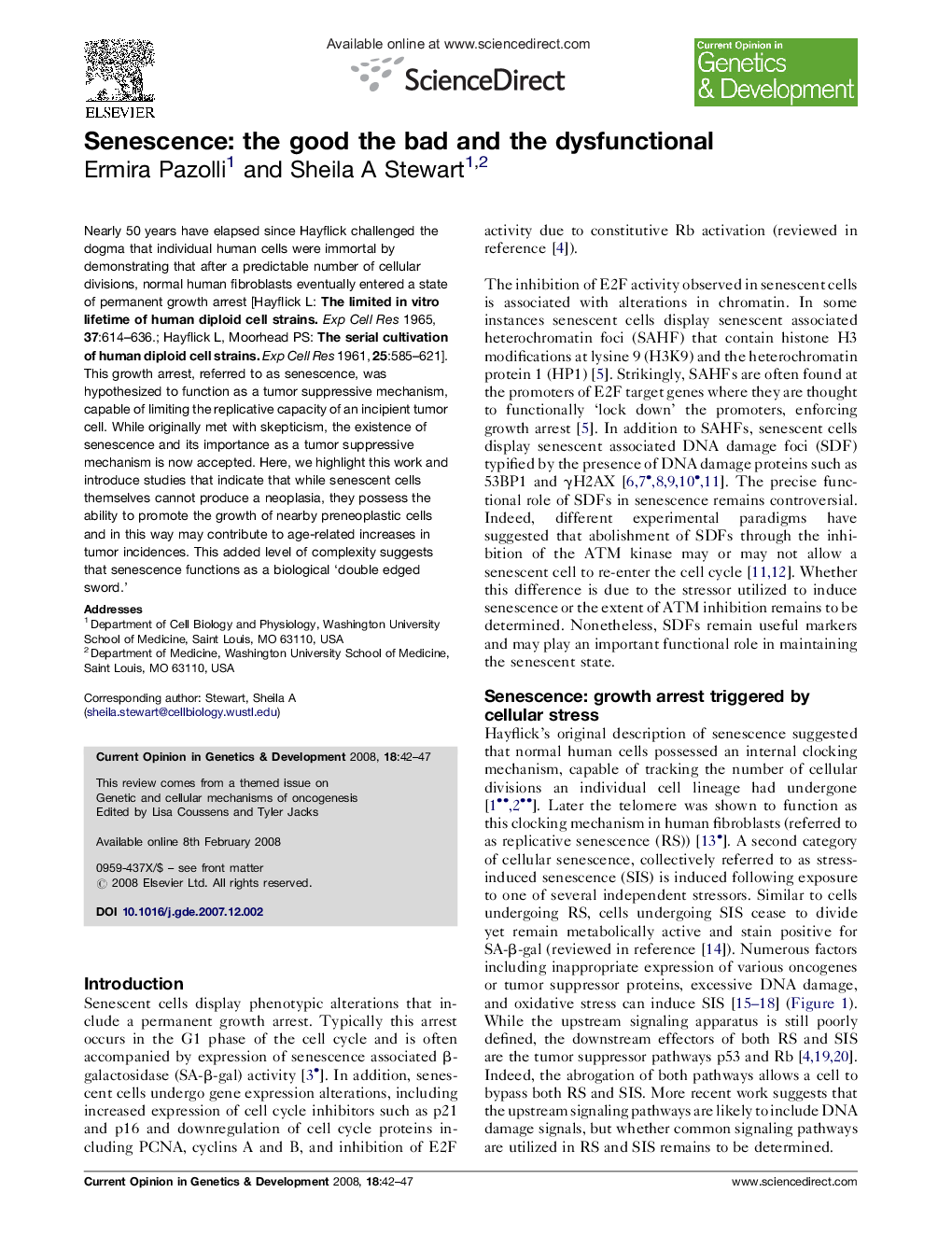| کد مقاله | کد نشریه | سال انتشار | مقاله انگلیسی | نسخه تمام متن |
|---|---|---|---|---|
| 2785128 | 1153930 | 2008 | 6 صفحه PDF | دانلود رایگان |

Nearly 50 years have elapsed since Hayflick challenged the dogma that individual human cells were immortal by demonstrating that after a predictable number of cellular divisions, normal human fibroblasts eventually entered a state of permanent growth arrest [Hayflick L: The limitedin vitrolifetime of human diploid cell strains.Exp Cell Res 1965, 37:614–636.; Hayflick L, Moorhead PS: The serial cultivation of human diploid cell strains.Exp Cell Res 1961, 25:585–621]. This growth arrest, referred to as senescence, was hypothesized to function as a tumor suppressive mechanism, capable of limiting the replicative capacity of an incipient tumor cell. While originally met with skepticism, the existence of senescence and its importance as a tumor suppressive mechanism is now accepted. Here, we highlight this work and introduce studies that indicate that while senescent cells themselves cannot produce a neoplasia, they possess the ability to promote the growth of nearby preneoplastic cells and in this way may contribute to age-related increases in tumor incidences. This added level of complexity suggests that senescence functions as a biological ‘double edged sword.’
Journal: Current Opinion in Genetics & Development - Volume 18, Issue 1, February 2008, Pages 42–47